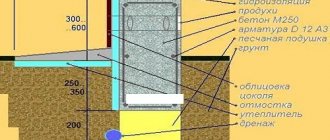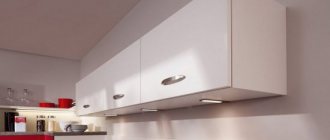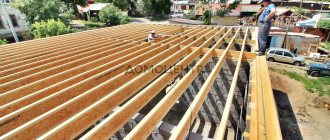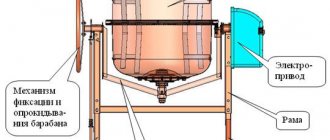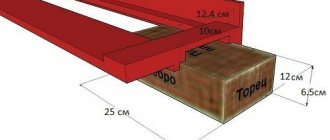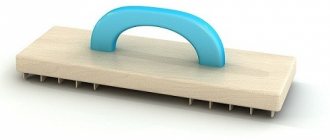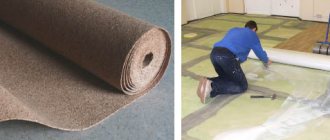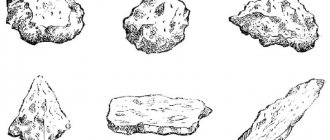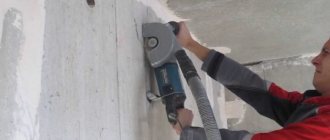Aerated concrete blocks have long become one of the most used building materials, including for the construction of walls. In the process of decorating the walls of a living room or for utility purposes in a utility room, it may be necessary to drive a nail, which is strictly prohibited. Aerated concrete is a fragile material due to its porous structure and requires the use of special fasteners. For these purposes, manufacturers are constantly replenishing the market with special chemical anchors that can withstand heavy loads, are easy to install, and do not destroy aerated concrete.
Pros and cons of use
Chemical anchors have a lot of advantages over other types of fasteners, the main ones are:
- absence of destructive pressure on the walls of the liner - the chemical composition, on the contrary, strengthens the structure;
- the location of the fastener is completely Germanized;
- the cost is much lower than that of conventional mechanical dowels;
In turn, there are several disadvantages. Firstly, this is the time it takes for the chemical composition to harden. There is a possibility that during this time the hairpin will deviate somewhat from a straight line. Secondly, to dismantle the anchor after the composition has hardened, it is necessary to destroy a section of the block. For example, to remove a mechanical dowel, you just need to unscrew the rod and easily pull out the plastic sleeve.
Return to contents
Dowels for lightweight concrete
SORMAT KBT dowels differ from ordinary ones in that they have a thread on their surface. As with a regular dowel, a hole is drilled, then the dowel is screwed in using a hex wrench. After this, you can screw in a screw or self-tapping screw.
Nylon dowel for lightweight concrete SORMAT KBT 8. Please note that there is a thread along the entire length of the dowel
The video below shows how to screw SORMAT dowels into a wall made of aerated concrete and expanded clay concrete blocks.
You can use fiberglass-reinforced nylon dowels that do not require drilling holes.
There are dowels that have screw ribs instead of external threads.
Dowel for aerated concrete GB from Fischer
The GB dowel is driven into the aerated concrete using a hammer, and then a screw is screwed into it. The process is shown in the video below.
Dowels for aerated concrete can be either nylon or metal.
Metal dowel for aerated concrete and gas silicate
Areas of use
Chemical fasteners for aerated concrete are used if there is a need to install fasteners in an aerated concrete block. Such anchors can withstand heavy loads, so they can be safely used for any household purpose - hanging a picture, attaching a shelf or an impressive wall cabinet. Since removing a dowel is a labor-intensive process that requires destruction of the material, chemical anchors are used only when it is necessary to fasten a particularly heavy object. A special reagent penetrates the pores of concrete and, after hardening, firmly fixes the stud.
Return to contents
What fasteners should I use for aerated concrete?
Today the market offers an unlimited variety of fasteners for fixing various objects on aerated concrete blocks. However, to select the optimal fastener, it is necessary to take into account the specific working conditions with the gas block.
For example, you can use plastic hardware to attach lamps or hanging mirrors. But it is better to install pipelines using metal dowels. It is more rational to fasten facing bricks to aerated concrete using galvanized flexible connections.
If you are planning to engage in low-rise construction of houses from aerated concrete blocks in Russia, Kazakhstan, Uzbekistan or another country, we recommend that you familiarize yourself with our catalog. Here you will find equipment for independent production of gas blocks . This way you will be 100% sure of their quality.
Varieties
There are several types of fasteners, the installation principle is the same, the difference is what type of resin serves as the basis for the fixing composition. The base can be one of the following resins:
- Epoxy acrylate. The composition based on this resin is widely used, has all the properties of the resins described below, in addition - fire resistance (after 2 hours of intense burning the anchor is not in danger of deformation), resistance to frost. The time for complete hardening of the composition is 15-180 minutes.
- Polyester. The main area of use is fastening facade elements, installing utility networks, and fences. To install an anchor for aerated concrete, a conical drill is mainly used; polyester reagents fix only threaded rods. There is no styrene in the composition, the dowels are suitable for external and internal work. The solution completely hardens in 25-180 minutes - the determining factor is the air temperature.
- Vinylester. Universal composition - suitable for threaded and smooth rods. Can be used in conditions of high humidity, and also does not contain styrene - this guarantees increased safety of the anchor. Vinylester resin reagent within 15-24 hours.
- Epoxy. Used when working with concrete class C20/25 and higher. The main areas of application are installation of technical equipment, road barriers, work with beams. The final hardening time is from 7 to 48 hours, depending on the air temperature. Among the distinctive characteristics, it is worth mentioning the following: moisture resistance, the possibility of installation both outside and inside the room, the absence of additional load on aerated concrete, the possibility of fastening with smooth reinforcement, and the absence of styrene in the composition.
Return to contents
Installation technology
Installing dowels in aerated concrete blocks is a simple process; it is enough to know the main stages of the work. To install anchors, it is not necessary to have special knowledge in the field of construction; it is enough to have basic repair skills. All stages of installation are described in more detail below.
Return to contents
Drilling holes
If you drill with a conical drill, the fastening will be much more effective.
The first thing to do is drill the place where the mount will be installed. The hole is made using an ordinary drill, then the cylindrical shape needs to be changed to a cone-shaped one with an expansion in depth. Using a pump, it is necessary to clean the hole from dust and small debris. You should work with aerated concrete carefully - one careless movement can cause a crack to appear.
Return to contents
Installing the sleeve
The hole must match the size of the sleeve used. Just insert it, press firmly - the sleeve should not fall out, but stay tightly in the slot.
Return to contents
Pouring chemical substance
Using a construction gun, inject the chemical reagent into the sleeve - make sure that the excess does not spread; you need to pour the solution slowly.
Return to contents
Installing the stud
Immediately after pouring the chemical solution into the sleeve, carefully screw in the threaded rod - the rod on which the structure will be directly attached.
Return to contents
Freezing
After leaving the anchor to harden, make sure that the pin does not deviate from a straight line. The setting period depends on the base of the chemical - usually takes from 2 to 15 minutes. After 12-24 hours, the solution hardens completely. In addition, air temperature and humidity levels affect the hardening time.
Return to contents
Chemical fasteners
This type of fastening involves the use of various specialized two-component polymer compositions, which ensure reliable fixation of metal parts in the base of the foam block.
The chemical compound includes cement and various resins. Cement provides strength and reliable adhesion of materials. Organic resins have a good adhesive effect.
Professional set for installing chemical anchors
Most often, several types of resins are used, on the basis of which the adhesive composition is produced:
- Epoxy - epoxy mixtures are the most widely used. With their help, you can fix various structures on walls, beams, and concrete road barriers. It is possible to use these compositions not only in conditions of high humidity, but also in water. Fastenings are installed both inside and outside buildings.
- Epoxy acrylate - has all the advantages of other adhesive polymer mixtures. It is highly resistant to open fire - R That is, the fastener can withstand fire for 120 minutes without affecting the anchor.
- Polyester – does not contain harmful styrene. Suitable for indoor and outdoor use.
- Vinylester - vinylester resins allow you to mount fasteners that will subsequently be used at sub-zero temperatures. Using such compounds, you can install anchors in wet holes. These adhesive solutions are equally suitable for smooth hardware and threaded products. Vinylester mixtures do not contain styrene, which is harmful to humans.
Types of resins determine the main characteristics of the mixture and are selected depending on a number of factors, for example, the operating conditions of the future fastening.
Anchors and equipment for them brand BIT
Fischer brand products
Components and installation technology of capsule fasteners
Such mixtures are usually packaged in a cylinder consisting of two independent compartments. When extruding the components using a construction gun, they are mixed in a given proportion in a special chamber of the cylinder. There are hardware equipped with special capsules that are destroyed during installation and fill the cavity with an adhesive composition - injection anchors.
The chemical anchor kit also contains metal parts. These are smooth or threaded studs with a diameter from 5 mm to 30 mm. Their length can be made up to 380 mm.
Galvanized stud for chemical fasteners
Anchor in a reinforcing glass
Fastener detail inside the foam block
The quality of the connection and ease of use are ensured by a special protective composition that is applied to the surface of the anchor. The end part is designed in such a way that when the pin is tightened, the adhesive composition is simultaneously mixed.
A depth mark is made on the side of the part at which it is recommended to lay the element into the base of the foam block.
Advantages and disadvantages of chemical hardware
A feature of chemical fasteners is that the adhesive composition penetrates into the cells of foam concrete and creates a dense plug when hardening. Removing it from the base of the product is possible only with the use of great force, which will also lead to destruction of the material.
This type of fastening has other advantages in use:
- Chemical anchors for foam blocks make the fastening much more reliable than mechanical ones.
- High strength connection, which can withstand quite significant loads.
- They do not create increased stress in foam concrete.
- High adhesion to cellular concrete and metal hardware.
- Resistant to temperature changes.
- The ability to easily and simply perform this type of fastening with your own hands.
- Environmentally friendly material.
- The versatility of using this type of fastener.
Greater strength allows you to remove the anchor with only part of the foam block - photo
But there are also some disadvantages to using these fasteners. Hardening of the adhesive composition, depending on its brand, occurs from 2 to 24 hours. Replacing the anchor simply won’t work: the foam block will be partially destroyed.
Installation technology
Installing chemical fasteners is quite simple, but certain conditions must be met:
- A mounting hole of the required diameter is drilled in the foam block to the required depth.
Advice: since cellular concrete crumbles easily, it is not recommended to use impact drills with hammer drills when working with such products.
- The cavity is thoroughly cleaned of concrete dust and small particles that have spilled from the block into the hole. A small brush of the appropriate diameter or a regular medical bulb will work well for this.
- Next, the hole is filled with a chemical composition. This can be a special capsule with an injection mixture or pumping an adhesive mixture from a cylinder.
- A metal anchor for the foam block is placed inside.
- The manufacturer's instructions indicate the setting time of the composition. It depends on the type of components, ambient temperature and other factors.
- After the adhesive mixture has completely hardened, further fastening can be done.
The device of capsule-type chemical fastenings is produced in a similar way.
The principle of the chemical anchor
Installation of injection anchor
Stages of installing chemical anchors
The type and size of the hardware are selected depending on the weight of the structure that is supposed to be fixed to the foam block.
